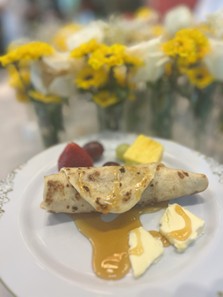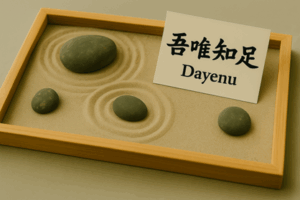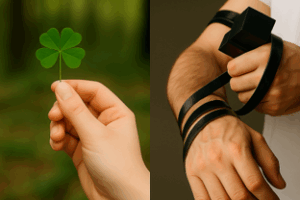Passover. Do I know a lot about Passover?
Given that I launched this website (BreakingMatzo.com) to help make Passover magical, meaningful, and memorable; I thought I knew a lot. I’ve celebrated Passover every year of my life. I’ve voraciously studied the Haggadah, explored Exodus symbolism, hosted Seders across three continents, and clocked over 2,000 hours of research and reflection. So I felt confident in my knowledge of Passover.
Until Joan smiled and said, “Let’s celebrate Mimouna at Debbie and Jay’s!”
I blinked. “Mimouna? What’s that?”
She lit up: “I’m so excited for Jay’s moufleta!”
More blinking. “Wait, moufleta?”
It was a complete revelation. As an Ashkenazi from Boston, I’d never heard of Mimouna, nor moufleta, and neither had my family or even my rabbi.
It turns out this vibrant tradition is deeply familiar to Moroccan Jews. In North Africa, it’s as common as matzo ball soup and gefilte fish is to Ashkenazi Jews. Just like that, I realized Passover had another surprise in store for me. I wasn’t just discovering a new custom, I was uncovering a whole new lens on Jewish life, joy, and unity.
What Is Mimouna?
Mimouna is a festive celebration that begins at sundown the day Passover ends. It’s a tradition rooted in Moroccan Jewish life, symbolizing a joyful return to chametz (leavened foods), the hope of abundance, and the power of hospitality. Neighbors and friends visit one another’s homes, sharing sweet treats, singing songs, and welcoming blessings of prosperity and peace. As our bellies expand from chametz to leavened food, we are expanding our souls and minds and sharing with our broader community.
The star of the Mimouna table is moufleta, a warm, buttery crepe often served with honey and jam. After a week of matzo, this delicacy feels like a soft, joyful hug for your taste buds. You can find our recipe for moufleta here.
There’s even a tradition of passing leftover matzo over one’s head: a symbolic gesture of leaving the affliction of slavery behind and stepping into a new season of liberation.
Ashkenazi and Sephardic: One Story, Many Journeys
This experience reminded me how vast and varied the Jewish world is. Though we all tell the story of the Exodus, the ways we celebrate Passover differ in remarkable ways:
– Ashkenazi Passover: I grew up with gefilte fish, horseradish tears, and kitniyot prohibitions. We followed a structured Seder, weaving stories of slavery and freedom with matzo ball soup and brisket.
– Sephardic Passover: Many Sephardic Jews, including Moroccan, Yemenite, and Syrian communities, allow rice and legumes. Their Seders brim with poetry, song, and theatrical re-enactments, like wrapping matzo in cloth and slinging it over a shoulder to simulate the Exodus.
Torah and the Journey from Affliction to Abundance
Deuteronomy 16:3 reminds us that matzo is the bread of affliction, eaten in haste as we left Egypt. But Judaism doesn’t end with affliction, it invites transformation.
From matzo to moufleta, we witness the journey from survival to celebration, from deprivation to delight. The shift mirrors the Israelites’ journey from Egypt to Sinai to the Promised Land.
Rabbi Abraham Joshua Heschel once wrote: “Judaism is not only about laws, it is about the transformation of time and the sanctification of joy.” Mimouna embodies that principle with sugar, song, and smiles.
But Mimouna isn’t about dividing Ashkenazi from Sephardic. It’s about inviting everyone in. At its heart, Mimouna is a celebration of hachnasat orchim: the mitzvah of welcoming guests, just as Abraham did in Genesis 18.
Moufleta is best shared with friends. The more the merrier.
A Final Blessing
There is always more to learn. Always a new tradition to uncover, a new flavor to taste, or a new soul to welcome. Passover is about memory, but it is also about discovery. Just as the Afikoman is hidden and later revealed during Tzafun symbolizing the concealed parts of ourselves, each Seder invites us to uncover a new insight, a new layer of freedom waiting to be found.
As the Talmud teaches in Pesachim 116b, “In every generation, each person must see themselves as if they came out of Egypt.” And sometimes, that journey includes a surprise detour through Morocco with moufleta in hand.
Chag Sameach, and Mimouna Mabrouka. May your freedom be sweet and your table full.
Enjoy a haiku inspired by this blog:
Matzo turns to crepe,
Honey drips on newfound joy—
Freedom’s final taste.
You can find a recipe for moufleta here.






